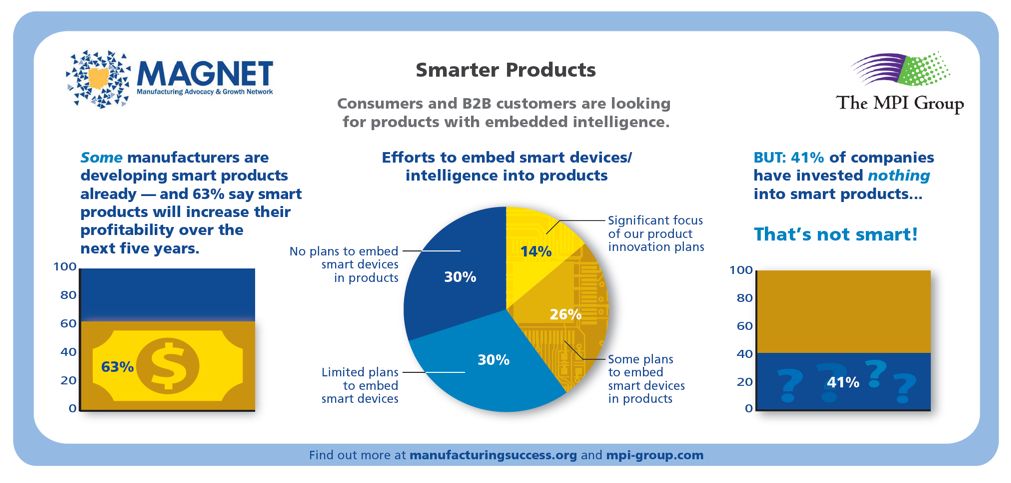Companies and consumers want smart products — and they’re getting them.
From the MPI Internet of Things Study — Embedded intelligence is showing up in everything from watches to shoes to refrigerators to tires. The smart-home market alone will grow from nearly $47 billion in 2015 to more than $121 billion by 2022.[1]
In industrial environments, too, embedded intelligence is rapidly becoming the norm.
Manufacturing executives get it: 63% say the application of smart devices/embedded intelligence to their products will increase profitability over the next five years. They know that when wearable devices, stamping presses, or household appliances can communicate and act on their own, the value of these products — and their profit margins — increase dramatically. That’s why 40% of manufacturers plan to embed smart devices/intelligence within their products.
Yet 30% of manufacturers still have no IoT product plans.[2] Why?
Many executives mistakenly believe that their products have no need for embedded intelligence. In fact, the biggest challenge for manufacturers developing IoT-enabled products is simply identifying the opportunities/benefits of such products (44% of manufacturers). Yet even a landscape rock, equipped with sensors, could become a communications center for lighting systems, sprinklers, or weather-monitoring stations.
Which rock are your IoT innovations hiding under?
Manufacturers identify excellent or good opportunities for IoT-enabled products for:
- Company’s finished products: 59% of manufacturers
- Technologies for other manufacturers’ products: 29%
- Devices for other manufacturers’ products: 29%
- Software for other manufacturers’ products: 26%
- Materials for other manufacturers’ products: 23%[3]
Getting these smart products to market requires a strategy that includes:
- Clear perspective of customer needs
- Talent and skills to design and manufacture smart products
- Supply chain able to deliver and support smart devices
- Processes and technologies to embed devices into products and materials
- Budget and resources.
When will your company — and your products — get smart?
[1] “Smart Home Market worth 121.73 Billion USD by 2022,” Markets and Markets.
[2] MPI Internet of Things Study, The MPI Group, “significant” or “some” focus of product innovation plans.
[3] MPI Internet of Things Study, The MPI Group.
© 2017 The MPI Group


